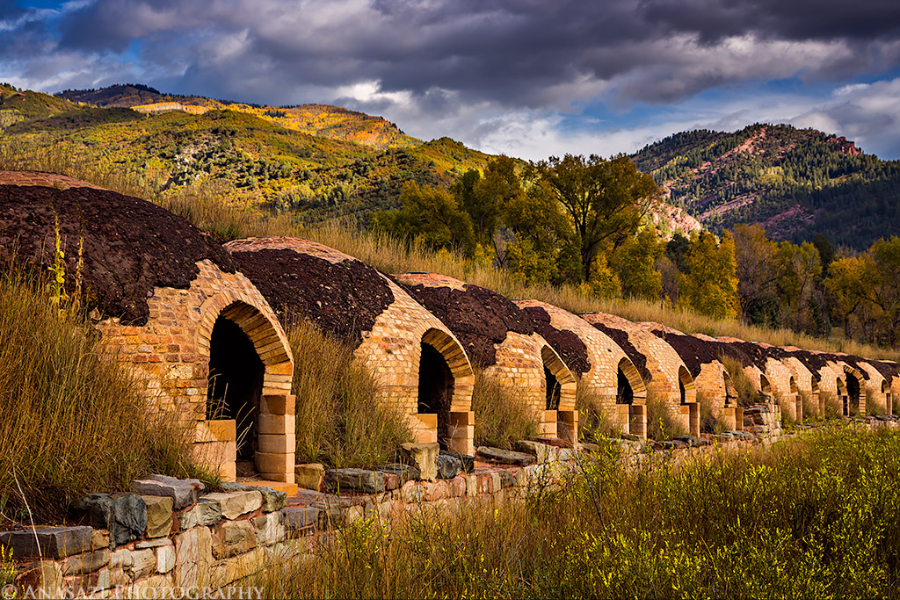Ancient Mexican Mining Ovens’ Legacy: A Historical and Cultural Study
Introduction
Mexico’s vast and varied landscapes have long been a canvas for its rich cultural and historical heritage. Amidst its natural beauty and vibrant traditions, one of the lesser-known yet crucial aspects of Mexico’s history lies in its mining industry, particularly the old Mexican mining ovens, known locally as “hornos de cal.” These ovens, pivotal in the colonial and early post-colonial periods, were more than mere structures; they were integral to Mexico’s mining operations and have left a lasting impact on the country’s historical and cultural fabric. This article explores the history, architectural significance, and cultural legacy of these fascinating relics.
Historical Background
The Rise of Mexican Mining
Mining has been a significant part of Mexico’s history since pre-Columbian times. Ancient civilizations such as the Aztecs and Maya were proficient in extracting various minerals, but it was during the Spanish colonial period that mining in Mexico saw a dramatic expansion. The Spanish conquest in the early 16th century introduced advanced mining techniques and intensified the search for precious metals. The discovery of extensive silver deposits in regions like Zacatecas and Guanajuato marked Mexico as a major player in the global silver market, dramatically transforming its economic landscape.
The Advent of Mexican Mining Ovens
As mining activities surged, there was a growing need for efficient ore processing methods. Enter the “hornos de cal,” or lime kilns, which emerged as a vital solution for converting raw ore into usable materials. The main product of these ovens was quicklime, which is essential to the smelting procedure. Quicklime, or calcium oxide, was obtained by heating limestone to high temperatures, thereby breaking it down into lime and carbon dioxide. This process not only made it easier to extract valuable metals but also contributed to the efficiency and profitability of mining operations.
Architectural Features
Construction and Design
Old Mexican mining ovens are notable for their distinctive and practical architectural features. Constructed from locally sourced materials like stone or adobe, these ovens were built to withstand the extreme temperatures necessary for lime production. The design of these ovens often reflected local geological conditions and material availability, making each one unique in its own right.
A typical mining oven structure includes several key components:
- Chimney: A tall, narrow chimney allowed for the efficient expulsion of gases and smoke produced during the lime-burning process. The design of the chimney was crucial for maintaining proper ventilation and ensuring the safety of the operation.
- Kiln Chamber: The main chamber, where limestone was placed and heated, was often cylindrical or dome-shaped. This shape was essential for ensuring even heating and optimal lime production.
- Firebox: Located at the base of the oven, the firebox was where fuel, typically wood or charcoal, was burned to generate the intense heat required for the process. The efficiency of the firebox was critical to the overall performance of the oven.
- Drafts and Vents: These components facilitated air circulation and temperature control within the oven, ensuring that the lime production process was consistent and effective.
Variations Across Regions
The various regions of Mexico had considerable differences in the design of their mining ovens. In some areas, ovens were built into hillsides or natural rock formations to enhance insulation and heat retention. These designs were particularly effective in regions with extreme temperatures or limited access to building materials. In other regions, more elaborate structures were constructed to accommodate the needs of larger mining operations, reflecting the local resources and technological advancements of the time.
Mining Ovens’ Function in the Mining Industry
Lime Production
The primary function of these ovens was to produce quicklime, a substance essential in the smelting process used to extract silver and other metals from ore. To assist remove impurities from the metal and increase smelting efficiency, quicklime was employed as a flux. Without these ovens, the extraction of metals would have been far less efficient, impacting the overall success of the mining industry.
Economic Impact
The production of quicklime played a crucial role in Mexico’s economic prosperity during the colonial period. The demand for lime was high, driven not only by mining operations but also by construction and agricultural needs. The efficiency of these ovens contributed significantly to the growth of the mining industry, which in turn fueled Mexico’s economic development. The success of the mining operations helped to establish Mexico as a key player in the global silver market and contributed to the country’s wealth and influence.
Labor and Community
Operating these ovens was labor-intensive, requiring skilled workers who understood the complexities of lime production. Many of these workers were local indigenous people, who often faced harsh working conditions. Communities centered around significant mining sites grew as a result of the existence of mining ovens. These communities contributed to the development of infrastructure, local economies, and cultural exchanges, leaving a lasting impact on the regions where they were established.
Cultural and Historical Significance
Legacy of Mining Ovens
The old Mexican mining ovens are more than just historical artifacts; they are symbols of Mexico’s rich mining heritage. Many of these ovens have been preserved and are now recognized as important cultural and historical landmarks. They provide valuable insights into the technological advancements and economic practices of the past, serving as a testament to the ingenuity and resilience of those who operated them.
Preservation and Tourism
In recent years, efforts to preserve and protect these historic structures have gained momentum. Many mining ovens are now included in heritage sites and museums, offering visitors a glimpse into Mexico’s mining history. These sites play a crucial role in educating the public about the historical significance of mining and the contributions of the labor force involved. Tourism initiatives have also helped to raise awareness about the importance of these sites and the need for their preservation.
Modern Relevance
The study of old Mexican mining ovens continues to hold relevance for modern industries and historical research. The techniques used in these ovens provide valuable lessons in traditional lime production methods, which can inform contemporary practices. Additionally, understanding the technological aspects of these ovens contributes to a deeper appreciation of historical mining technologies and their impact on Mexico’s economic and social development.
Challenges and Future Directions
Conservation Efforts
Despite their historical importance, many old Mexican mining ovens face challenges related to conservation and preservation. Natural erosion, vandalism, and inadequate funding can threaten the integrity of these structures. Addressing these challenges requires a concerted effort from local communities, historians, and conservationists. Collaborative efforts and innovative approaches are needed to ensure that these important historical landmarks are preserved for future generations.
Promoting Awareness
Raising awareness about the significance of these historical sites is crucial for their preservation. Educational programs, community involvement, and tourism initiatives can help highlight the importance of preserving old Mexican mining ovens. By fostering a greater appreciation for these structures, we can ensure that their historical and cultural value is recognized and maintained.
Research and Documentation
Ongoing research and documentation of mining ovens contribute to a deeper understanding of their historical context and technological aspects. Archaeological studies, historical records, and oral histories provide valuable insights into the role of these ovens in Mexico’s mining industry. Continued research can help to uncover new information about these structures and enhance our knowledge of their significance.
Conclusion
The old Mexican mining ovens, or “hornos de cal,” represent a fascinating chapter in Mexico’s history of mining and industry. These structures are not only a testament to the technological innovations of the past but also a symbol of the economic and social dynamics that shaped the country. We learn more about the history of mining in Mexico and the lasting influence of these amazing furnaces as we investigate and maintain these historical sites. Through conservation efforts, educational initiatives, and ongoing research, we ensure that the story of Mexico’s mining ovens remains a vibrant and integral part of our historical and cultural heritage.






